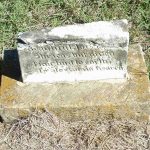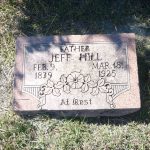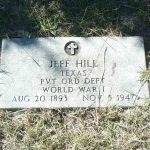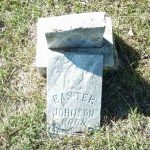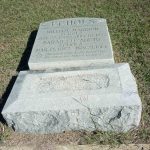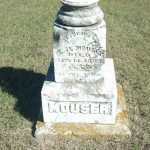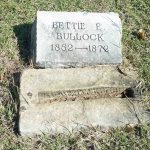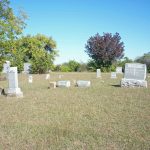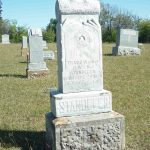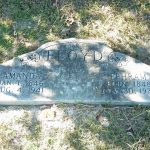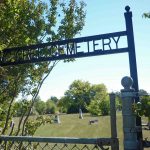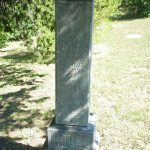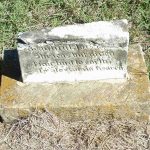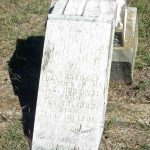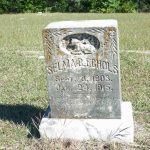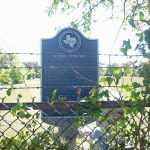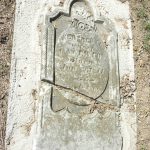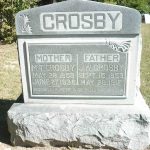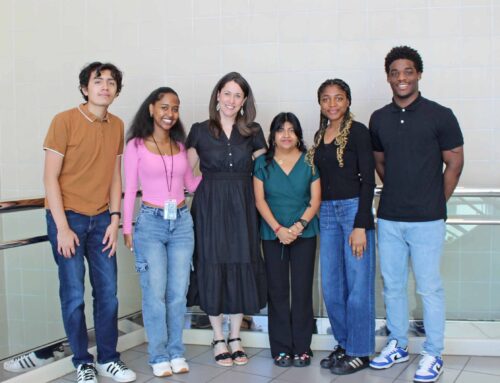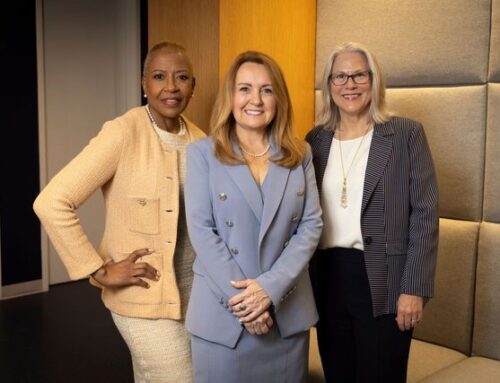The 3-acre cemetery, hidden behind vine-covered chain link fences and accessible only by back alleys, contains unmarked graves and broken-off headstones. Tilted markers are carved with last names recognizable as Lake Highlands’ pioneer families – Goforth, Dixon, Jackson and Church. Engraved granite recalls first names from a bygone era – Bettie, Hilliard, Elvirah and Harriet.
Finally – and soon – McCree Cemetery will be restored. Preservation Dallas, a local non-profit organization, received a $200,000 grant to record the history and promote the future stewardship and protection of the little piece of history located south of Estate Lane and behind the AT&T Building at 9900 Audelia.
The cemetery, established in 1866, is separated into two sections – whites and African Americans – according to the times. Inside the “white” area are graves of Peters Colonists, War Veterans and many founding members of Lake Highlands and White Rock-area Methodist and Baptist churches. The easternmost section holds freed slaves who settled into nearby Little Egypt (near today’s Northlake Shopping Center) at the end of the Civil War. (Settlers dubbed their new home after the biblical location where previous slaves were freed from bondage.)
“Our first goal is to prepare a preservation plan for addressing current issues at the cemetery,” said David Preziosi, Executive Director of Preservation Dallas. “This will include meeting with adjacent property owners and the neighborhood and producing detailed maps and restoration plans for the site, headstones and its landscape.”
“Headstones stand as a silent record of early pioneers who helped settle this area over 100 years ago,” added Preziosi. “With so many young families living near this historic site, we felt like this project would afford us the opportunity to recognize an important chapter in Dallas’ history and the many individuals who helped this part of Northeast Dallas thrive.”
The group will work with archaeologists involved at other historic Dallas sites, including Freedman’s, Pioneer’s and King’s Daughters cemeteries, to identify unmarked graves and interpret the site. Victoria Clow, a local historic preservation expert and physical anthropology adjunct professor, plans to involve community college student in the project.
Lake Highlands neighbor Tim Willis, owner of Emeritus Landscaping, will work to restore and maintain the plant life, and a study of the history will be done in an effort to gain future historic landmark designations.
How can you help?
“Keep your ears open for more information about our Friends Group,” says Robin Moss Norcross, who currently sits on the Dallas Park Board and formerly served as a Landmark Commissioner for District 10. Norcross, who’ll be forming the Friends of McCree Cemetery group formally soon, says “it’s only logical to want to protect this interesting and sacred piece of history right here in our neighborhood.”
From Existing Texas Historical Commission Marker at the McCree Cemetery Site (1985):
The first land for this cemetery was granted by Mahulda Bonner McCree in 1866. At least two burials, for John Henry Jones (d. 1862) and Elizabeth McCullough (d. 1864), occurred before the graveyard was formally deeded. Over the years, the cemetery has been enlarged to cover over 3 acres. It contains the graves of Peters Colonists, War Veterans, and many persons associated with early area Methodist and Baptist churches. McCree Cemetery remains an important part of the recorded history of Dallas County.
In 1866, Mahulda McCree deeded 1 1/2 acres for a graveyard. (Dallas County, TX Deeds, Vol. J, Page 485). In 1896, J. E. Griffin and J. A. Griffin and wife deeded an additional 5/8 acre. (Dallas County, TX Deeds, Vol. 247, Page 444.)
A small church was built at the cemetery and used by different groups for revivals, etc. After a fire had destroyed their own building, the Rodgers Baptist Church congregation used the building on the cemetery grounds in the 1930’s. For this reason, the cemetery is sometimes mistakenly called the Rodgers, or Rogers, Cemetery, but it is the McCree Cemetery, named for Mahulda McCree.
Click on any image below for larger slideshow view:

